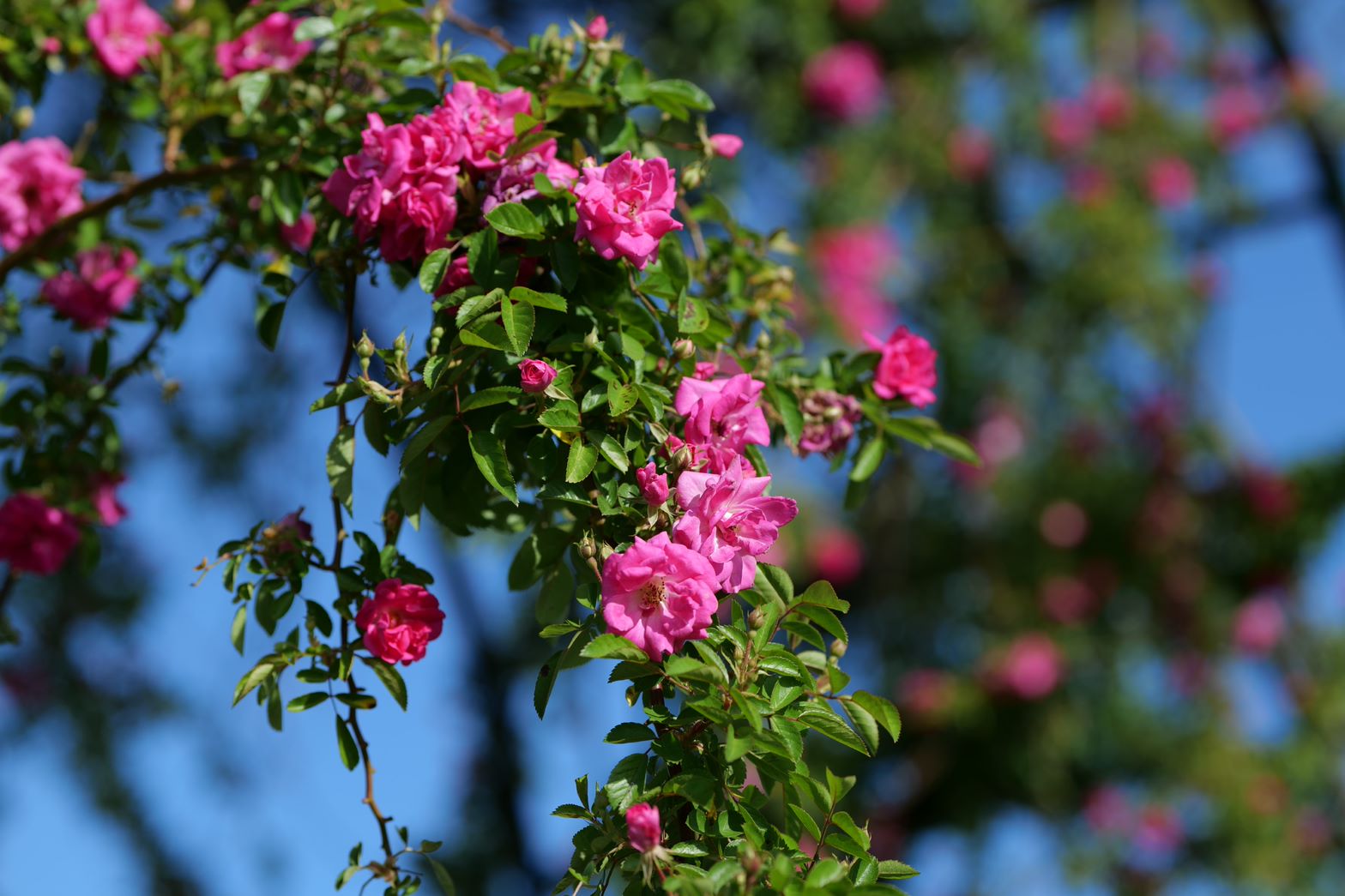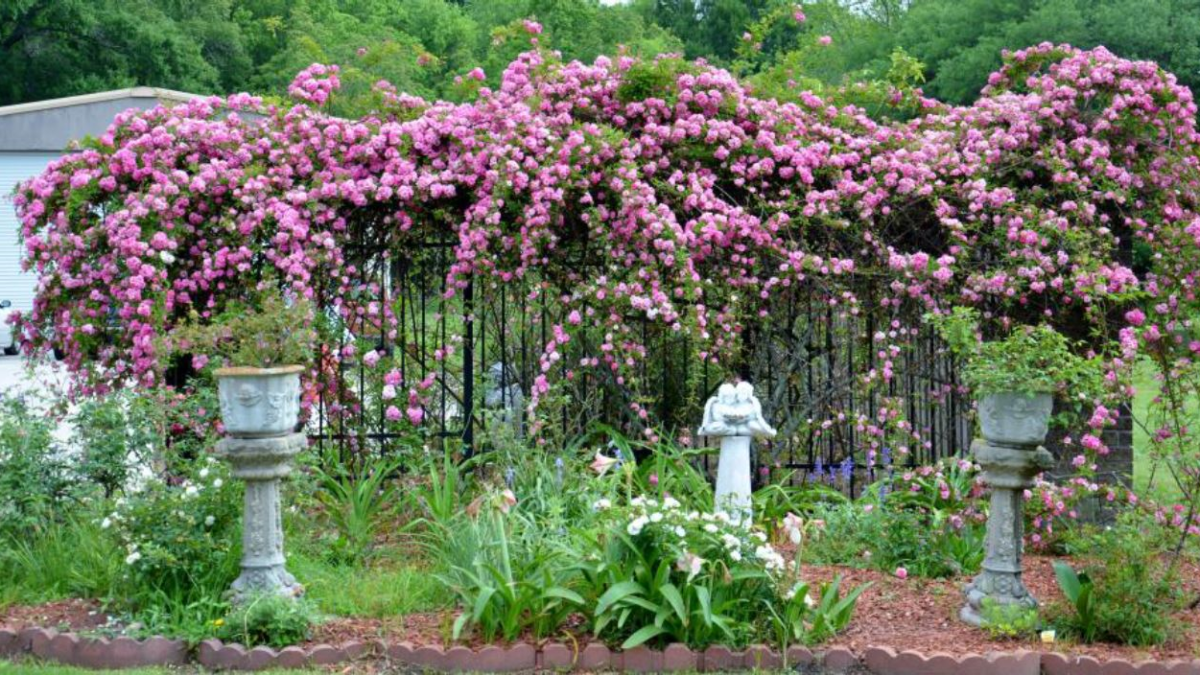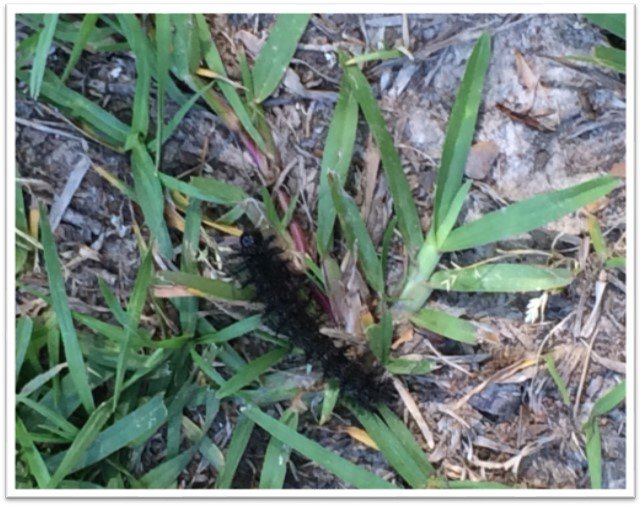
Cassidy, Lankford Work to Stop ATF from Eroding American’s Second Amendment Rights
February 25, 2023
Two shot in Thibodaux on Friday evening
February 26, 2023By Heather Kirk-Ballard LSU AgCenter Horticulturist
The LSU AgCenter is proud to announce its first Louisiana Super Plant selection for 2023, and it is none other than the Peggy Martin rose. Also known as the Katrina rose, most Louisiana residents know this rambling rose. If you’ve spotted the profuse, deep pink bloomers climbing on trellises or fences this spring, you’ve seen one of the most beautiful, easy-care roses of the South.

Peggy Martin roses grace the archways of many walking paths across the Gulf South. Photo by Randy LaBauve/LSU AgCenter.
Peggy Martin is a multi-stemmed, deciduous, woody vine with a twining and trailing growth habit. It features showy clusters of fragrant, deep pink flowers and dark green foliage and is thankfully thornless. This rose is an excellent choice for vertical growth and for trellising. Its dainty pink flowers grace the archways of many a walking path across the Gulf South.
There is a unique story behind this hardy rose that survived two weeks of being submerged in flood waters after Hurricane Katrina and resembles the resilience of our state and people.
When the devastating hurricane hit Louisiana in 2005, Peggy Martin was living in Plaquemines Parish, located southeast of New Orleans. Martin returned to her home after the storm to find only two surviving plants. One was a climbing rose that had been started from cuttings and passed down to her.
William Welch, a professor and Texas AgriLife horticulturist, was a guest of Martin before the hurricane hit. A three-time alumnus of LSU, Welch was fond of the climbing, thornless rose and had gotten cuttings of it.
Welch propagated and sold the plant, naming it the Peggy Martin rose. Some of the profits went to a restoration fund for historic Gulf South gardens devastated by the hurricane.
The rose produces clusters of small flowers in early spring and can rebloom in the fall. The blooms repeat, but do not continuously bloom. These semi-thornless, climbing roses are often planted along fence lines and trellises and can grow 6 to 15 feet in height and width.
The roses should be planted in full sun for the best flower production. Roses are generally heavy feeders and can be fertilized with a rose or complete slow-release fertilizer in the spring and again in the fall. Liquid fertilizers can be used more frequently. Plants can be pruned for shaping or to remove dead canes and vines in late winter or after they bloom in spring.
Peggy Martin roses are climbers and should be provided a support to grow on, as they spread widely. They can be secured to a support and trained to grow up and over fences, trellises or walls. This rose has few pests and diseases to worry about. Supplemental irrigation and watering during times of drought is recommended.
Plants can be found at local retail garden centers and are a wonderful addition to home gardens. Cuttings root easily, so if you know someone with a Peggy Martin, you can propagate at home.
You can use a rooting hormone to improve rooting success; follow label instructions carefully. Use a stick or pencil to make a hole, place the cutting in the soil and then firm the soil around the stem. Water in well, and keep the soil moist but not soggy. You can help maintain the humidity for the cutting by putting a clear plastic bag over the pot. Roses take six to 10 weeks to root and can be placed in larger containers or outdoors when rooted.
The Louisiana Super Plant program is an LSU AgCenter educational and marketing campaign that highlights tough and beautiful plants that perform well throughout the state of Louisiana. Each spring and fall, AgCenter horticulturists announce the Louisiana Super Plants selections for that year. Louisiana Super Plants have a proven record with many years of reliable performance in Louisiana landscapes or have gone through several years of university evaluations and observations. Look for these plants at local nurseries.








